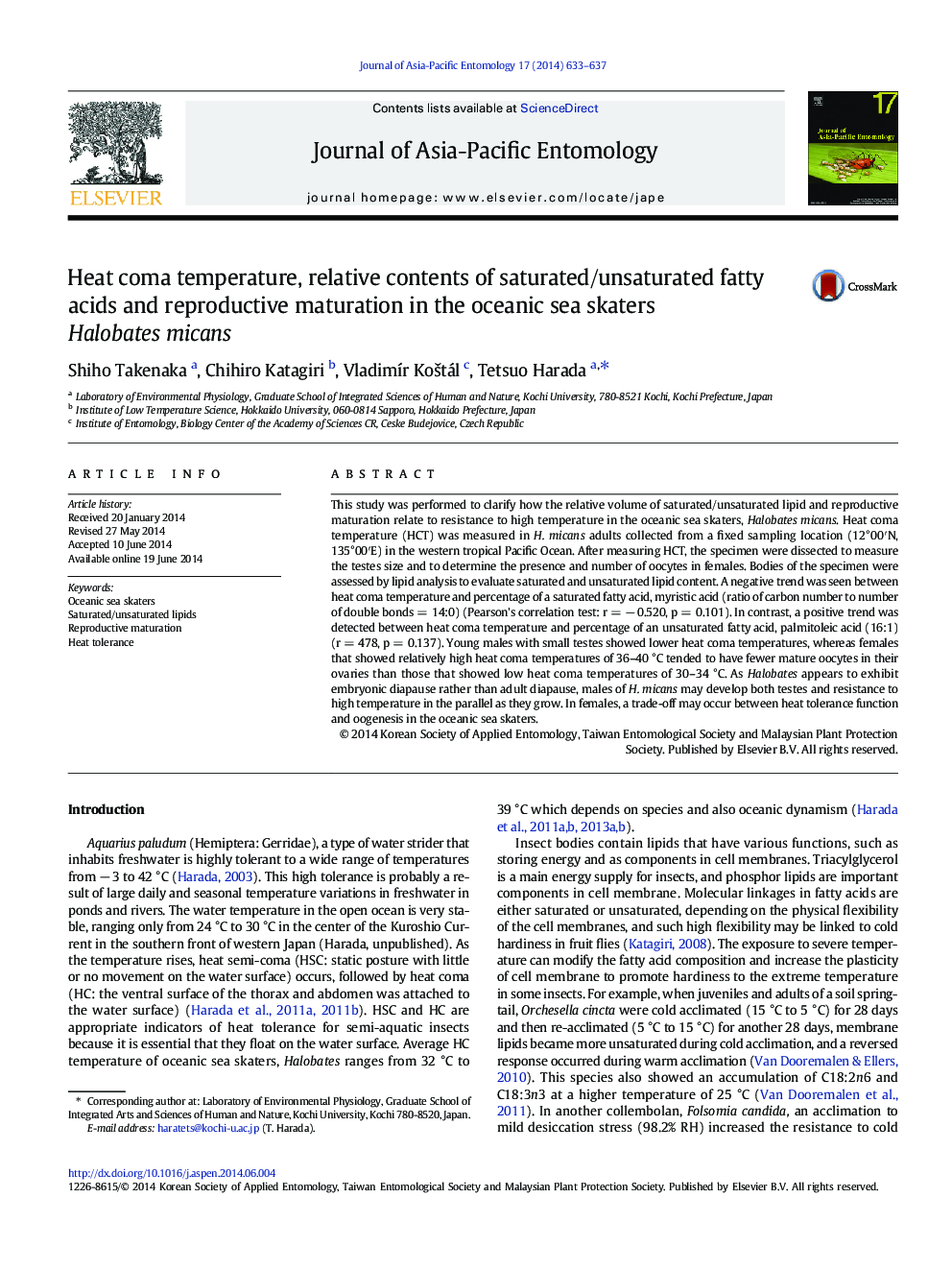| Article ID | Journal | Published Year | Pages | File Type |
|---|---|---|---|---|
| 6380377 | Journal of Asia-Pacific Entomology | 2014 | 5 Pages |
â¢A negative trend and a positive one were seen between heat coma temp. and percentage of a saturated fatty acid, myristic acid and between heat coma temp. and percentage of an unsaturated fatty acid, palmitoleic acid, respectively in Halobates micans.
This study was performed to clarify how the relative volume of saturated/unsaturated lipid and reproductive maturation relate to resistance to high temperature in the oceanic sea skaters, Halobates micans. Heat coma temperature (HCT) was measured in H. micans adults collected from a fixed sampling location (12°00â²N, 135°00â²E) in the western tropical Pacific Ocean. After measuring HCT, the specimen were dissected to measure the testes size and to determine the presence and number of oocytes in females. Bodies of the specimen were assessed by lipid analysis to evaluate saturated and unsaturated lipid content. A negative trend was seen between heat coma temperature and percentage of a saturated fatty acid, myristic acid (ratio of carbon number to number of double bonds = 14:0) (Pearson's correlation test: r = â 0.520, p = 0.101). In contrast, a positive trend was detected between heat coma temperature and percentage of an unsaturated fatty acid, palmitoleic acid (16:1) (r = 478, p = 0.137). Young males with small testes showed lower heat coma temperatures, whereas females that showed relatively high heat coma temperatures of 36-40 °C tended to have fewer mature oocytes in their ovaries than those that showed low heat coma temperatures of 30-34 °C. As Halobates appears to exhibit embryonic diapause rather than adult diapause, males of H. micans may develop both testes and resistance to high temperature in the parallel as they grow. In females, a trade-off may occur between heat tolerance function and oogenesis in the oceanic sea skaters.
Graphical abstractNegative and positive trends between a saturated fatty acid, myristic acid, (carbon number: number of double bonds = 14:0) and an unsaturated fatty acid, palmitoleic acid (16:1), respectively.Download full-size image
